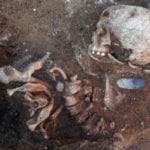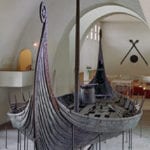 Mysteries
Mysteries  Mysteries
Mysteries  History
History 10 Surprising Stories About the Texas Rangers
 Humans
Humans 10 Philosophers Who Were Driven Mad by Their Own Theories
 Miscellaneous
Miscellaneous 10 Video-Game-Worthy Weapons and Armors from History
 Weird Stuff
Weird Stuff 10 Psychics Who Accurately Predicted Wartime Events
 The Arts
The Arts 10 Pieces of Art Inspired by a Broken Heart
 Health
Health 10 Science Fiction-Sounding New Medical Treatments
 History
History 10 Surprising Facts About the Father of Submarine Warfare
 Space
Space Ten Astonishing New Insights into Alien Worlds
 Weird Stuff
Weird Stuff 10 Bizarre Summer Solstice Rituals Still Practiced Today
 Mysteries
Mysteries Top 10 Haunting Facts About the Ghost Ship MV Alta
 History
History 10 Surprising Stories About the Texas Rangers
 Humans
Humans 10 Philosophers Who Were Driven Mad by Their Own Theories
Who's Behind Listverse?

Jamie Frater
Head Editor
Jamie founded Listverse due to an insatiable desire to share fascinating, obscure, and bizarre facts. He has been a guest speaker on numerous national radio and television stations and is a five time published author.
More About Us Miscellaneous
Miscellaneous 10 Video-Game-Worthy Weapons and Armors from History
 Weird Stuff
Weird Stuff 10 Psychics Who Accurately Predicted Wartime Events
 The Arts
The Arts 10 Pieces of Art Inspired by a Broken Heart
 Health
Health 10 Science Fiction-Sounding New Medical Treatments
 History
History 10 Surprising Facts About the Father of Submarine Warfare
 Space
Space Ten Astonishing New Insights into Alien Worlds
 Weird Stuff
Weird Stuff 10 Bizarre Summer Solstice Rituals Still Practiced Today
10 Creepy Facts About Historical Burials
Watch the video of this list on YouTube: 10 Creepy Facts About Historical Burials
People have been burying the dead since before recorded history began. It is an essential rite shared by almost every culture. There are many unique beliefs about burial, and the human need to inter the deceased has led to many strange customs and events.
10Suicide Victims Were Buried At Crossroads With Stakes Through Their Hearts

Suicide in England was once considered a heinous crime and the punishment extended even after death. To the English, suicide was self-murder and the perpetrators of unsuccessful suicides were charged as felons. The property of a suicide victim would be confiscated by the Crown after death which prompted families to disguise suicides to preserve their inheritance.
Another deterrent to suicide was that the victim would be denied Christian burial rites. People were concerned this would affect their afterlife and prevent their resurrection. Friends or family would also have to bury the body themselves.
The English enforced these laws to combat suicides but also because they feared them. Superstition held that a suicide victim’s spirit could return to haunt their home after death. In order to prevent spirits from roaming the town, the bodies of suicide victims were buried at crossroads. It was believed that being buried in such a manner would confuse the restless soul and prevent them from finding their way back home. A further safety measure included driving a stake through the corpse’s heart. In some cases, bodies were even buried near the seashore to prevent them from returning and terrorizing the living.
9Thousands Of Dead Under Church Floorboards
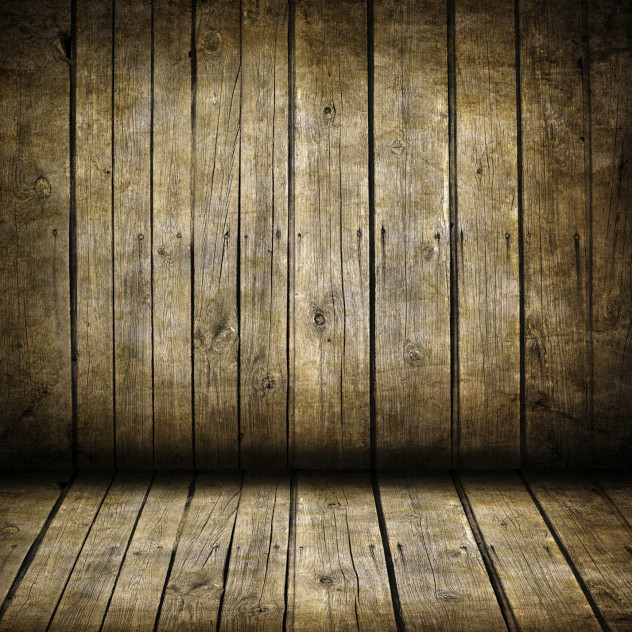
Before separate cemeteries were created in old England, the preferred place to bury the dead was in churchyards. There was much profit to be made from this practice. A particularly famous and grim example of the profit from London’s prolific dead occurred at Enon Chapel. The preacher of the church, who was motivated by profit, began to inter the city’s dead at a rate of 30 per week beneath the floorboards of his church. The piles of dead bodies kept accumulating until there were over 12,000 bodies. This was unsustainable for a church basement, and compromises were made.
Corpses were stacked to the ceiling, and the gases seeping through the floorboards caused parishioners to faint and children to be accosted by corpse flies during Sunday school. Eventually, the basement couldn’t hold all the bodies so the dead were carted away to be dumped in the Thames River. Occasionally, parts fell out of the carts during such journeys. This horrified local residents who found skulls littering their streets. The chapel was eventually shut down once authorities discovered what was happening, though it was later bought by another party and turned into a dance hall. The parties were called “dances of the dead.”
8Death Abroad In The Middle Ages

In the Middle Ages, death abroad proved a particular problem because those of high rank wanted to be buried at home. Ancient attempts to preserve bodies included doctors, monks, or butchers removing a corpse’s innards and burying them locally. The rest of the body was soaked in vinegar or treated with salt and then wrapped in animal hides for transport. If the embalming technique was not successful, the transporters would be left with a horribly reeking corpse for their journey back home.
In response to the failures of embalming techniques that tried to preserve the whole body, another form of preservation called mos teutonicus was developed. This practice involved cutting the corpse into manageable pieces and boiling it. This process separated flesh from bones. The bones could then be sent back to the deceased’s homeland while the tissue was interred near the place of death. However, some preferred their entire remains to be shipped back. Henry V had both his bones and flesh sealed in lead cases and buried in Westminster Abbey. Mos teutonicus was controversial at the time, and Pope Boniface VIII condemned the technique (though other clergy supported it).
7Roman-Egyptian Burials
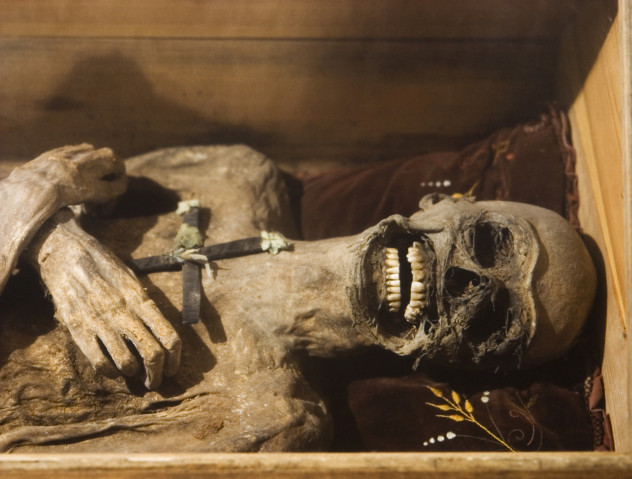
Rome was a vast multicultural empire. After a conquered area was occupied by Romans, the new rulers often married locals until it was difficult to tell conqueror from conquered. Even gods could blend together; Hermanubis was an amalgamation of Hermes and the Egyptian god Anubis. But along with its gods and DNA, ancient Egypt’s burial practices also mingled with those of its Roman occupiers.
While Roman dead were usually entombed or cremated, Romans in Egypt adopted the custom of mummification. These “Roman mummies,” were not as well preserved as their older Egyptian counterparts. Roman Egyptians waited 40 days until the mummy was wrapped. This gave time for the corpse to decompose. This is why they did not stand the test of time as well as older mummies that were embalmed only days after death.
However, the Fayum mummy portraits remain. These portraits were created by Roman Egyptians painting portraits of the deceased and fastening them over the faces of mummies. Unlike portraits in other parts of Rome, the Fayum mummy portraits remained remarkably well preserved due to Egypt’s arid climate. They are now considered some of the greatest achievements of Greco-Roman art.
6The Towers Of Silence

Zoroastrianism has many rules regarding the treatment of the dead. It is believed that corpses pollute the elements. Both burial and cremation are prohibited; this requires what some would consider unusual means to dispose of bodies. Ancient Zoroastrians built cylindrical towers atop hills where bodies were placed for birds to eat. They were called the Towers of Silence.
The birds completely stripped the flesh from the bones in a matter of hours. The bones were then left to dry and bleach in the sun. After drying, they were tossed into a well in the center of the tower where they reduced to powder. Sometimes lime was used to speed the process. A filtration system then purified the water and let it drain out of the tower to feed surrounding gardens.
However, modern Zoroastrians in Mumbai are facing modern problems: The vultures that traditionally devoured the dead are going extinct. Since slaughtering cows is forbidden, dead cows are left to be eaten by the local birds. The vultures began dying once a certain painkiller was approved for use on cattle. This painkiller caused irreversible kidney failure in the birds and caused their population to shrink to a few thousand. In 2012, the Zoroastrian residents of Mumbai planned to build aviaries to repopulate the vultures for their towers. However, the painkiller is still a problem. It is extremely popular among humans as well as cows, and if a person used it three days prior to death it will continue killing the birds.
5The Rise Of Cremation
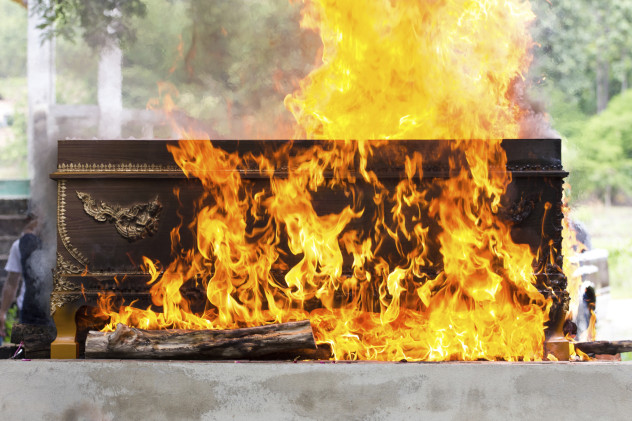
While Romans practiced cremation regularly, it fell out of favor with the rise of Christianity. Even in the late 19th-century cremation was viewed as disgusting and blasphemous. Traditionalists in the US thought cremation was an attempt by non-believers to subvert the Christian doctrine of resurrection. Few believed that an all-powerful God could not raise a cremated body at Judgment Day, but cremation was seen as an insult to God’s plan. Since Christian doctrine called for the resurrection of the body—which cremation destroyed—they believed that reducing a corpse to ashes spit in the face of God.
However, cremation eventually grew in popularity. Abraham Lincoln’s embalming presented a striking image, and families of deceased Civil War soldiers were likewise impressed by the preservation of the bodies of those killed in war. Embalming helped lead to the acceptance of alternatives to direct burial. Later, one US doctor—accurately or inaccurately—linked the spread of disease in his community to local burials. He claimed that the pine boxes used to lay bodies to rest were not enough to contain the disease-causing matter of the corpses, which then mixed with groundwater to infect the living. In response, he built the US’s first crematorium.
Yet sanitation alone was not enough to make the practice of burning bodies mainstream: It took fear. Gothic horror stories—and a few real instances—made people terrified of being buried alive. Cremation was a surefire way not to be interred early. Being prematurely cremated was not a pleasant thought either, but advocates argued that, while both were horrible ways to die, premature cremation would last only a few seconds. Those buried alive would suffer horrible psychological torment for days on end.
4Six Feet Deep
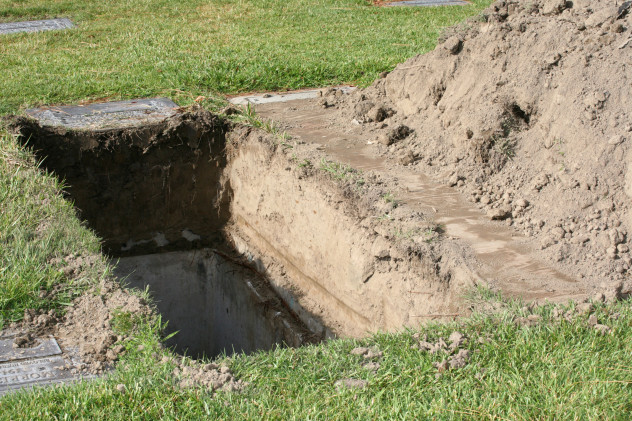
Bodies were buried six feet deep for a number of reasons. Six feet of soil would stave off the odor of the corpse as well make it difficult to easily rob a grave. However, the main reason was that at less than 183 centimeters (6 ft), it was easy for an animal to savage the body. Modern graves are usually dug around 137-centimeters-deep (4.5 ft). Modern caskets are heavier than the older pine boxes that were once used to bury the dead. They are also sealed rending the need to protect them against animals no longer important.
But, while six feet was not the minimum, it was by no means the maximum either. In large European towns where space was limited, multiple interments were once made in a single grave. These graves could be dug as deep as 9 meters (30 ft), and the coffins piled atop each other with only a marker between. This was done for families who could not afford multiple grave sites. There were also what were known as common graves where bodies of the poor were interred. They filled these with as many corpses as would fill the hole.
3The Many Horrors Of The Plague Pits
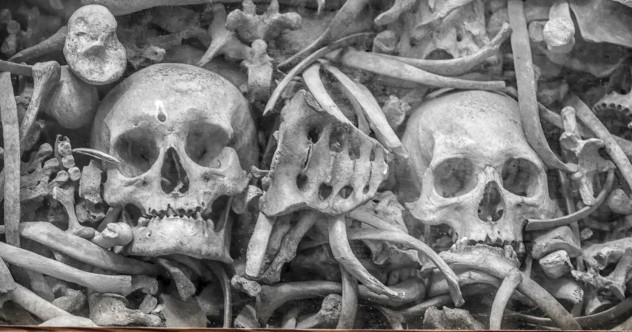
The fact that there were plague pits in London during the Black Plague is well known, but they were even more horrible places than many realized. Aside from being simple holes where the dead were tossed, they terrified London residents for many reasons besides their association with death. Several of the plague pits were dug on unconsecrated ground, and burials proceeded without any religious ceremony. Londoners living during the Plague feared not only for their lives but their afterlives as well.
No visitors were allowed at the pits. This was done partially to prevent the spread of disease, but also because many plague victims on the verge of death would simply throw themselves in. Officials would then be forced to drag them out again. However, some chose to simply ignore them perhaps our of the fear of becoming infected. Several bodies were found buried alive.
The corpse collectors themselves were another horror. One named Buckingham held up the bodies of children by one leg and pretended to be hawking firewood. He would also expose the bodies of deceased young women to the public by lining them up around the lip of the pits. Fortunately, he was arrested and imprisoned.
2Burial: An Emotional Need?
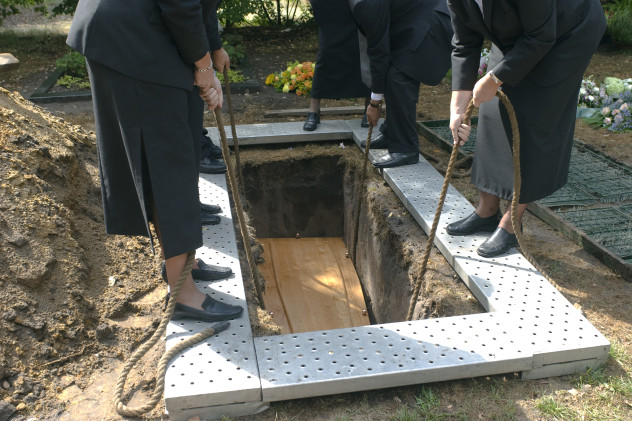
Burials have been around since before Homo sapiens emerged as the dominant species on Earth. At least 50,000 years ago, Neanderthals were burying their dead. One Neanderthal burial site in Iraq suggests that they may have even laid their dead to rest in beds of flowers though that particular aspect is still a matter of archaeological debate.
Neanderthals have also been buried with items they used in life. However, since burial goods have only been found in later graves, it’s been suggested they may have learned it from the ancestors of modern humans. The ancestors of humans were burying their dead with burial goods as early as 100,000 years ago. One of the oldest examples found is in the Skhul Cave in Palestine, where a hunter was buried with a boar jaw in his hand. Since the hominids found at the cave had brains capable of higher functions, the question has been raised if burial fulfills a basic emotional need of sentient beings.
1The Ash Eaters
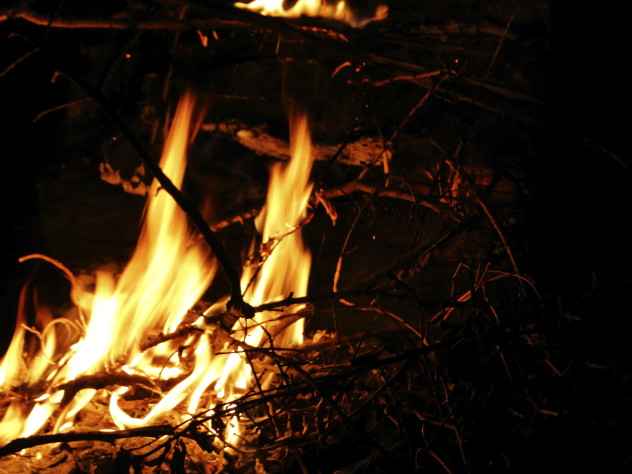
The Yanomami people of the Amazon have no custom of burial. They cremate their dead and then eat their ashes. It’s done to save the deceased’s soul. The Yanomami believe that once a person dies their soul goes into a kind of limbo. It can then migrate to a different kind of being, which is why certain birds (possible candidates for reincarnated souls) are not killed.
They believe that a soul can only leave the state of limbo if it is cremated, mixed with banana paste, and eaten—preferably by its relatives. Once inside their bodies the soul can be freed and reach salvation. That doesn’t mean the ritual is carried out immediately. They usually wait until a day of festivity to consume the ashes, leaving the dead’s soul in limbo and their ashes in the house until then.
The custom of eating old human ashes might sound unappetizing to most, but to the Yanomami it’s serious business. They are a nomadic people who often go to war with neighboring tribes over space. Once of the most serious threats one can give is that the victors will not eat their enemies, which would trap their soul in limbo forever.
Nathan keeps a Japan blog where he writes about the sights, expat life, and finds Japanese culture in everyday items. You can also find him on Facebook and Twitter.
